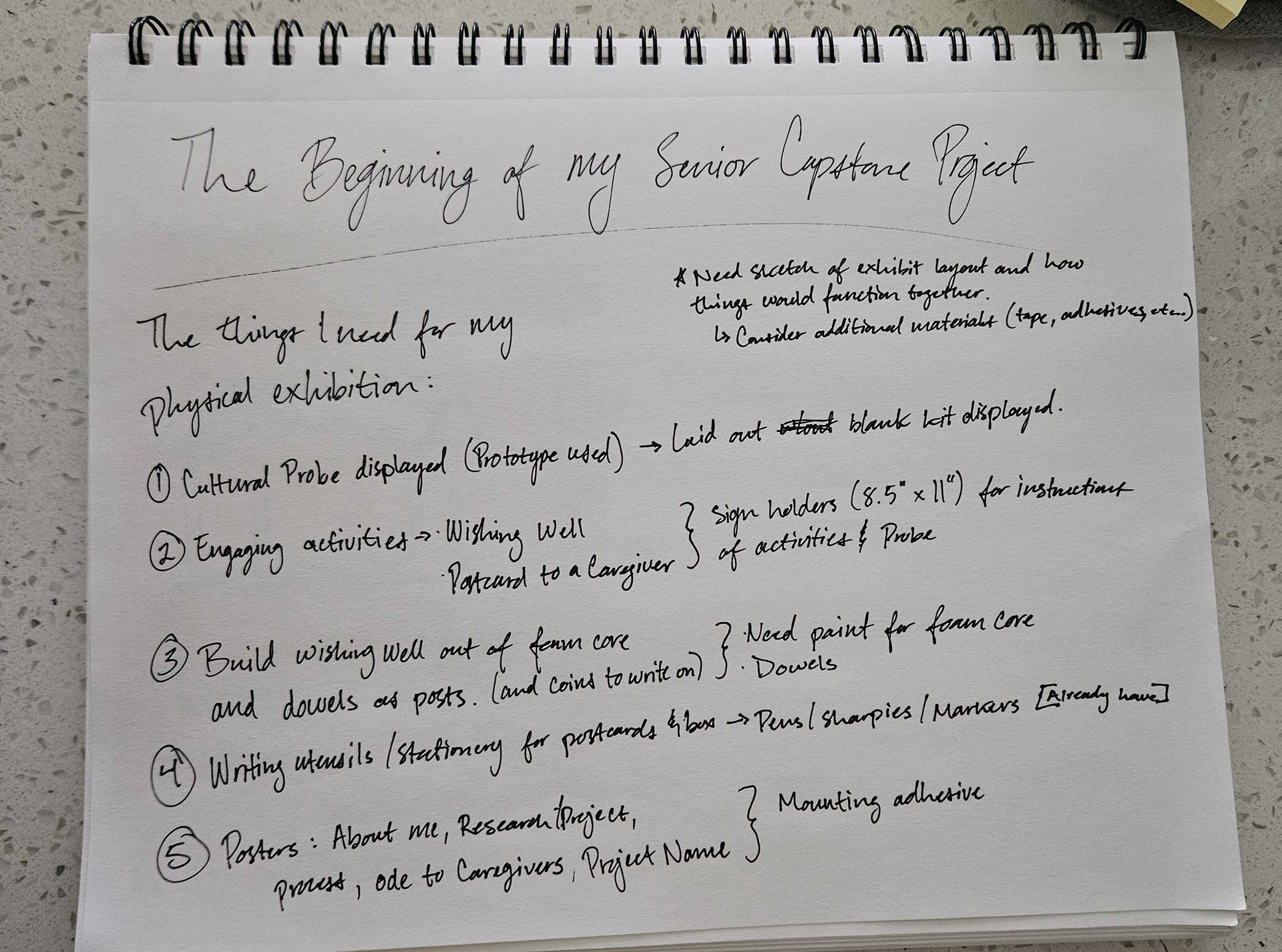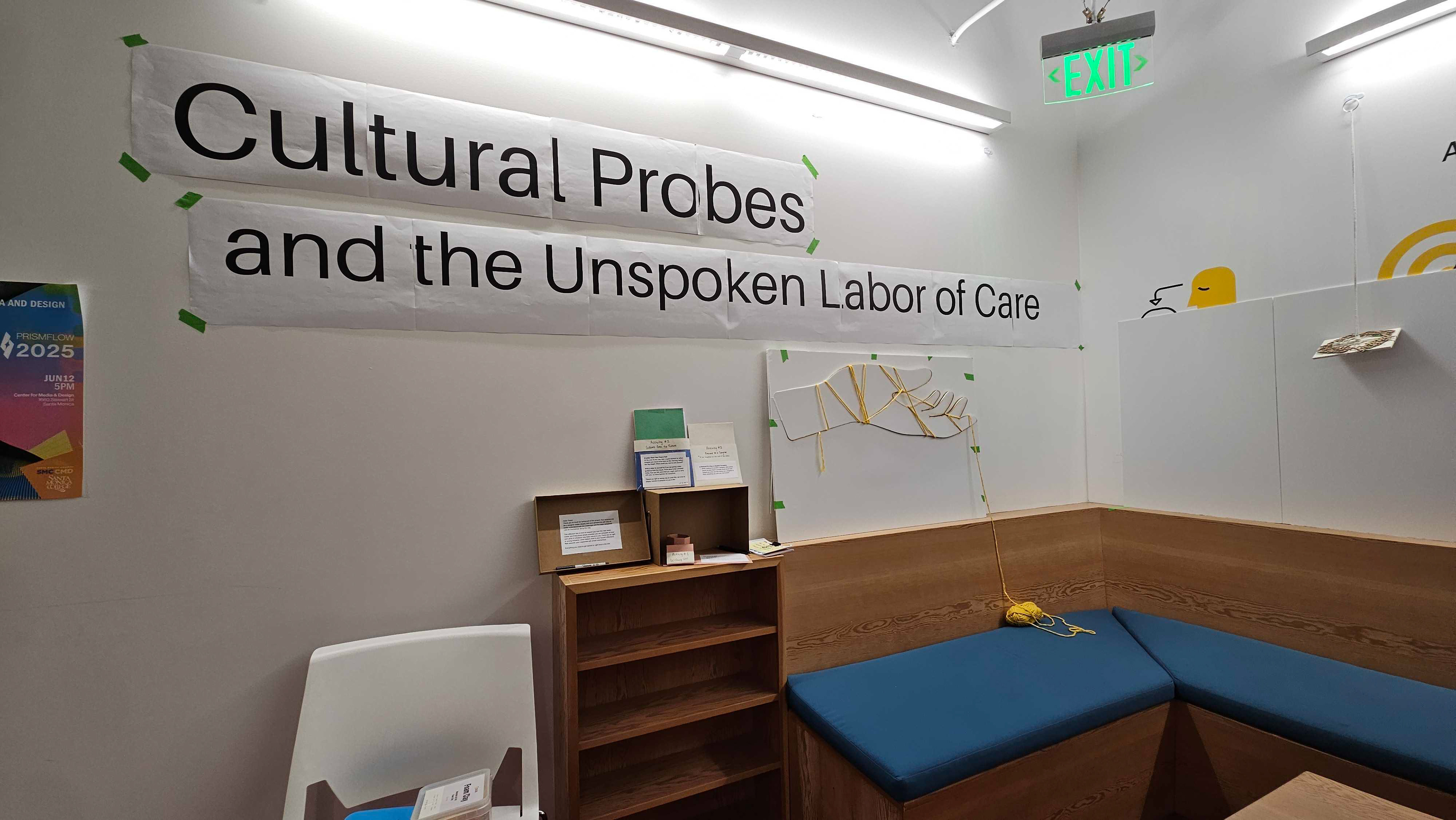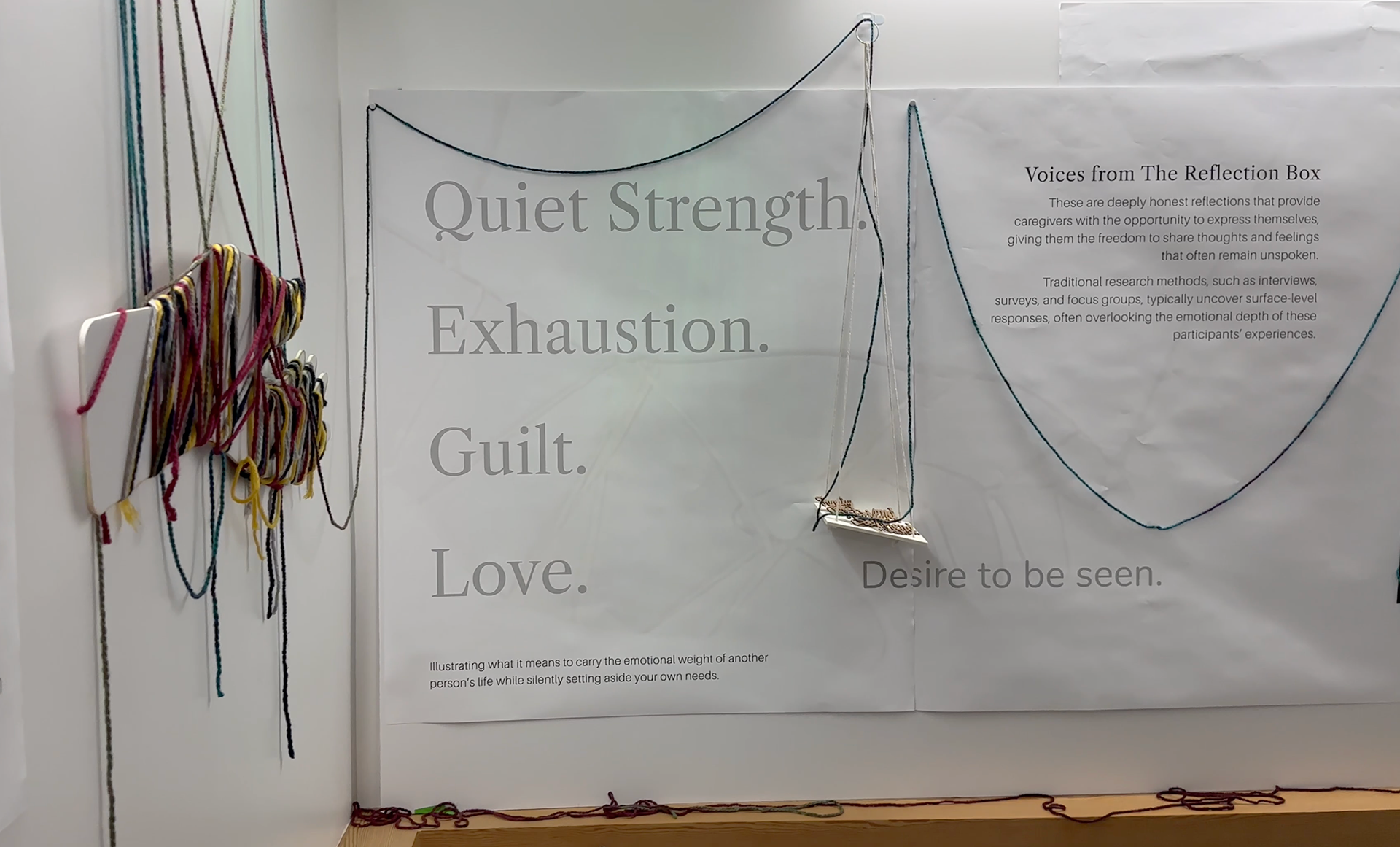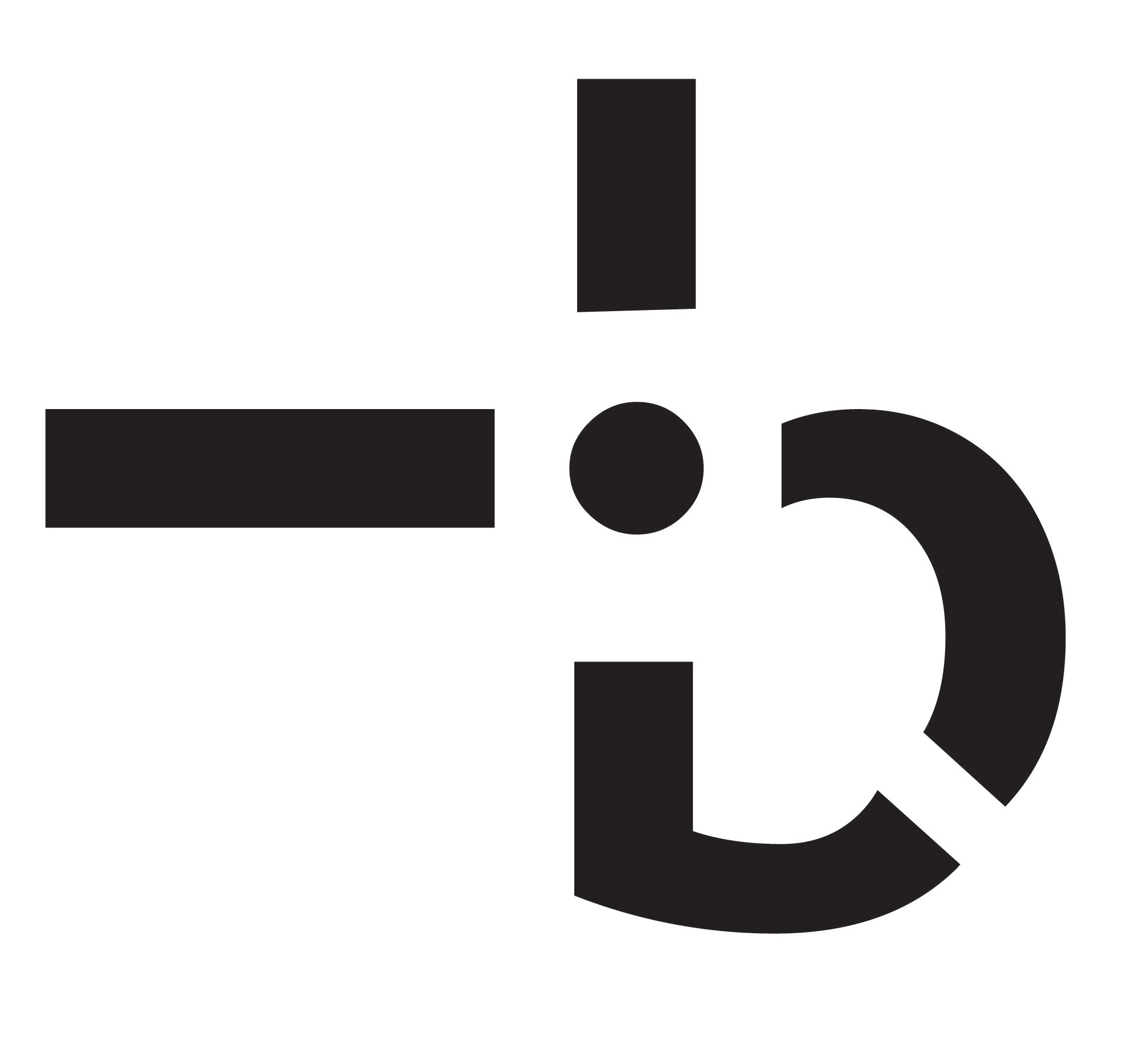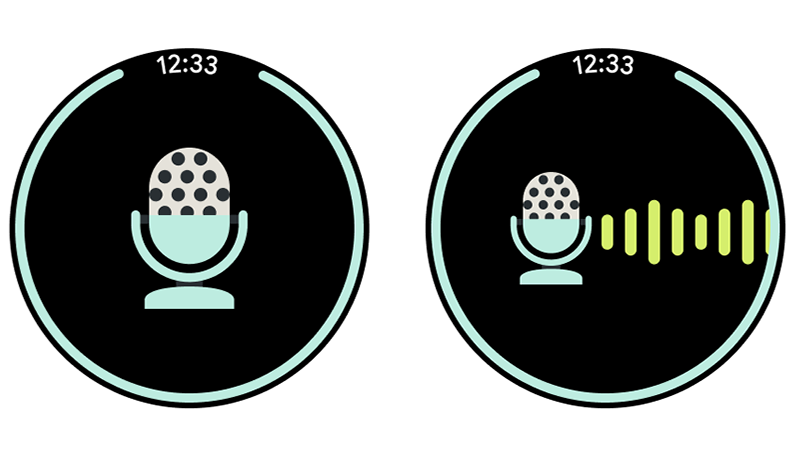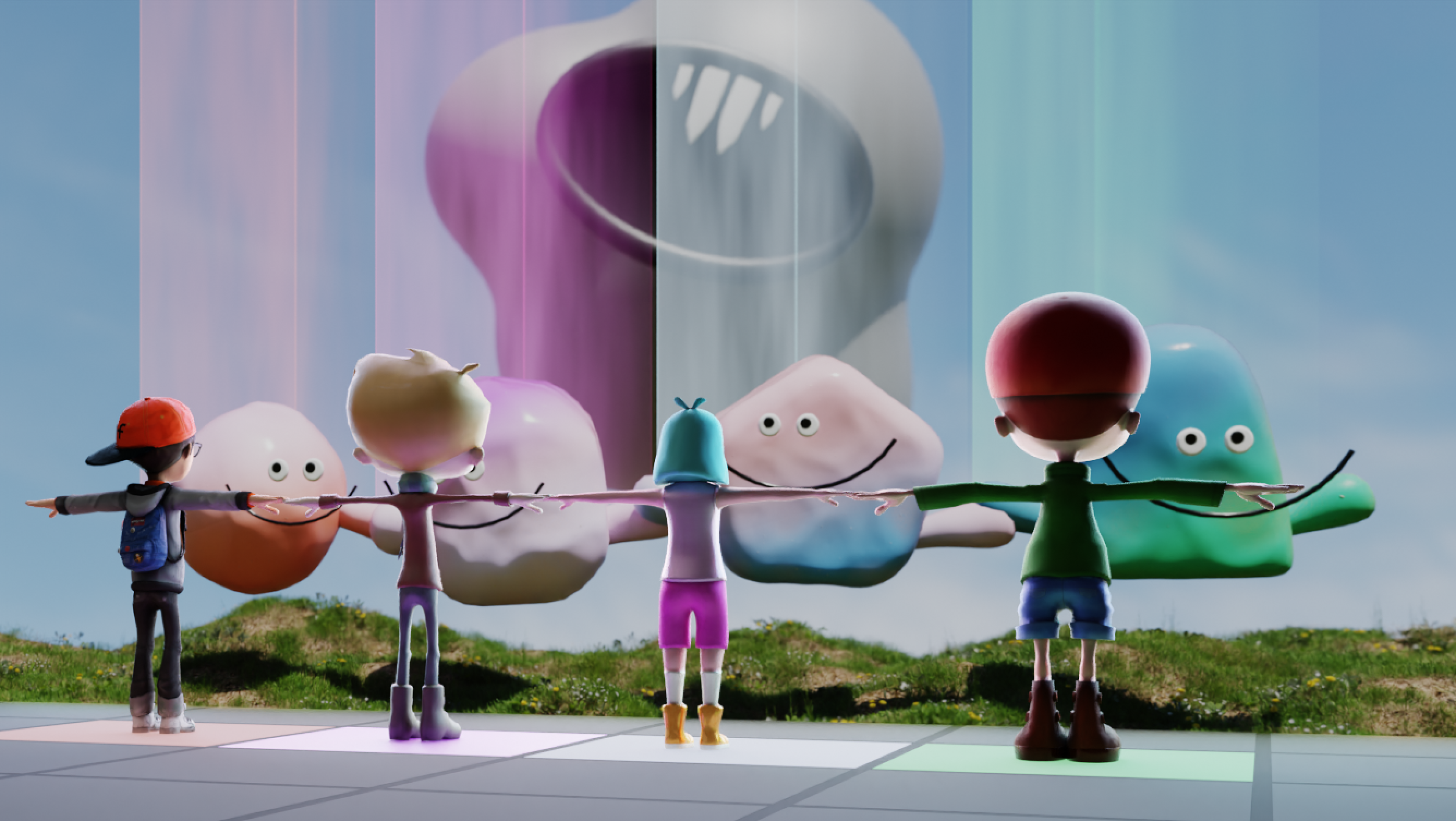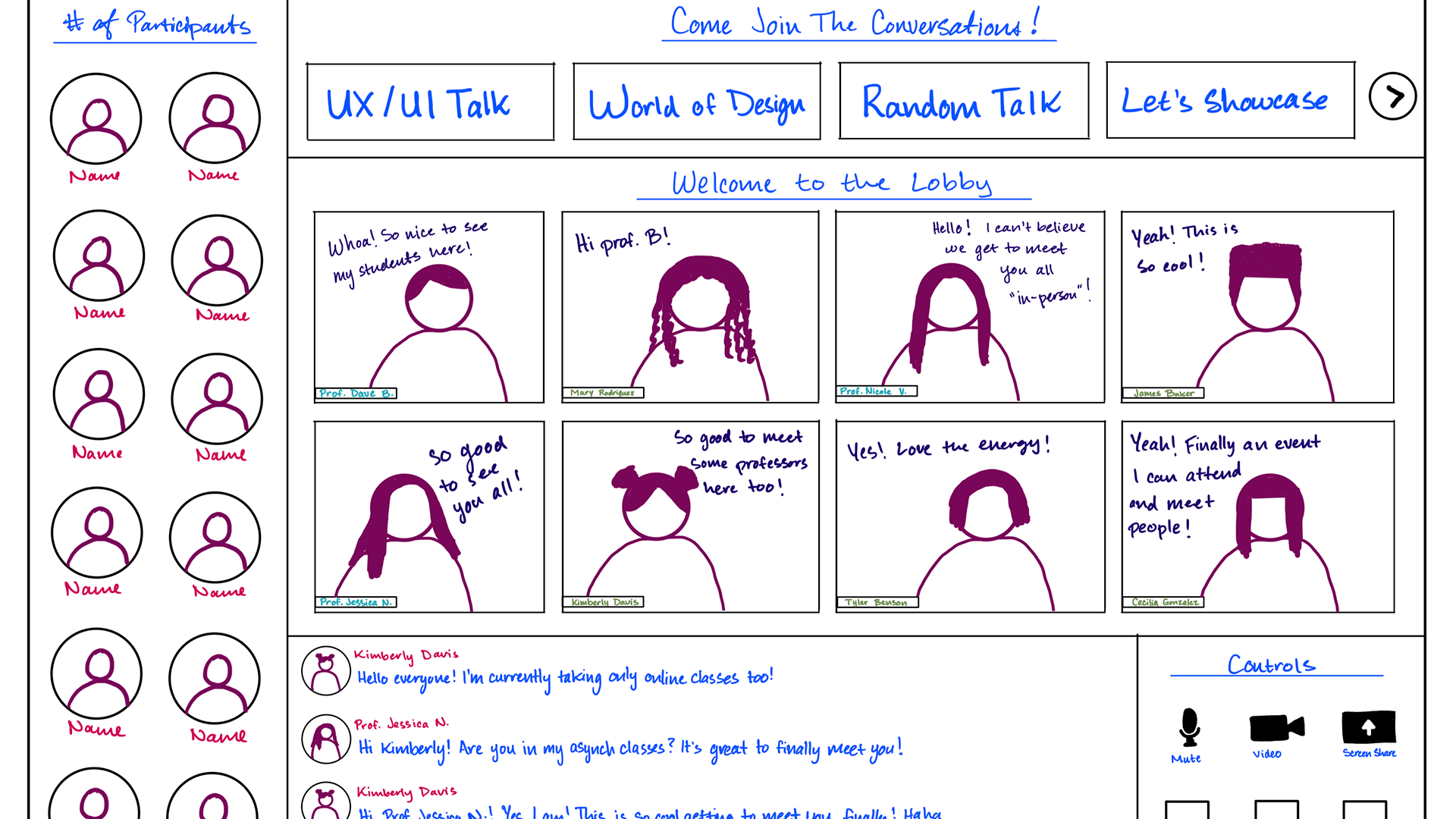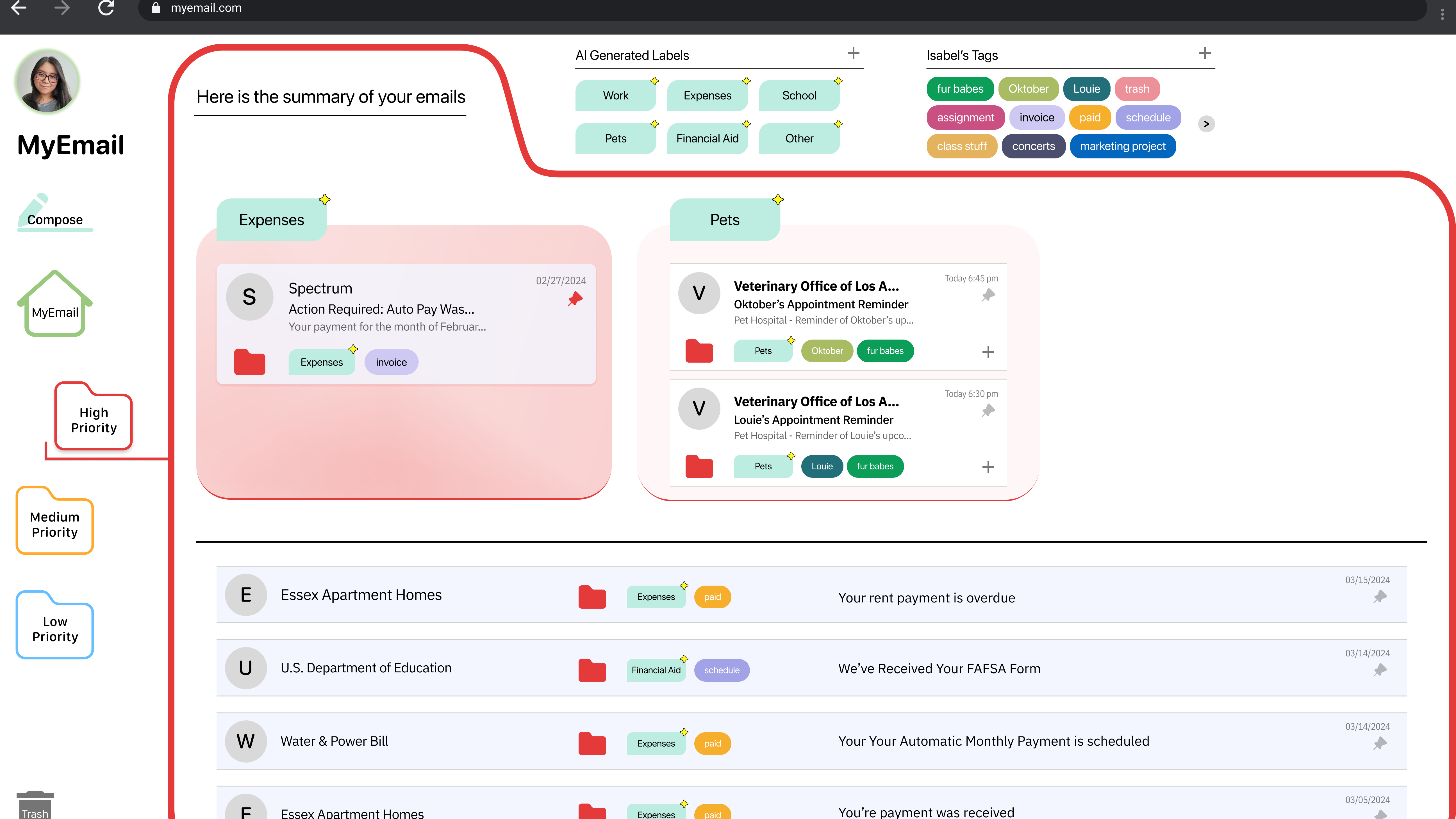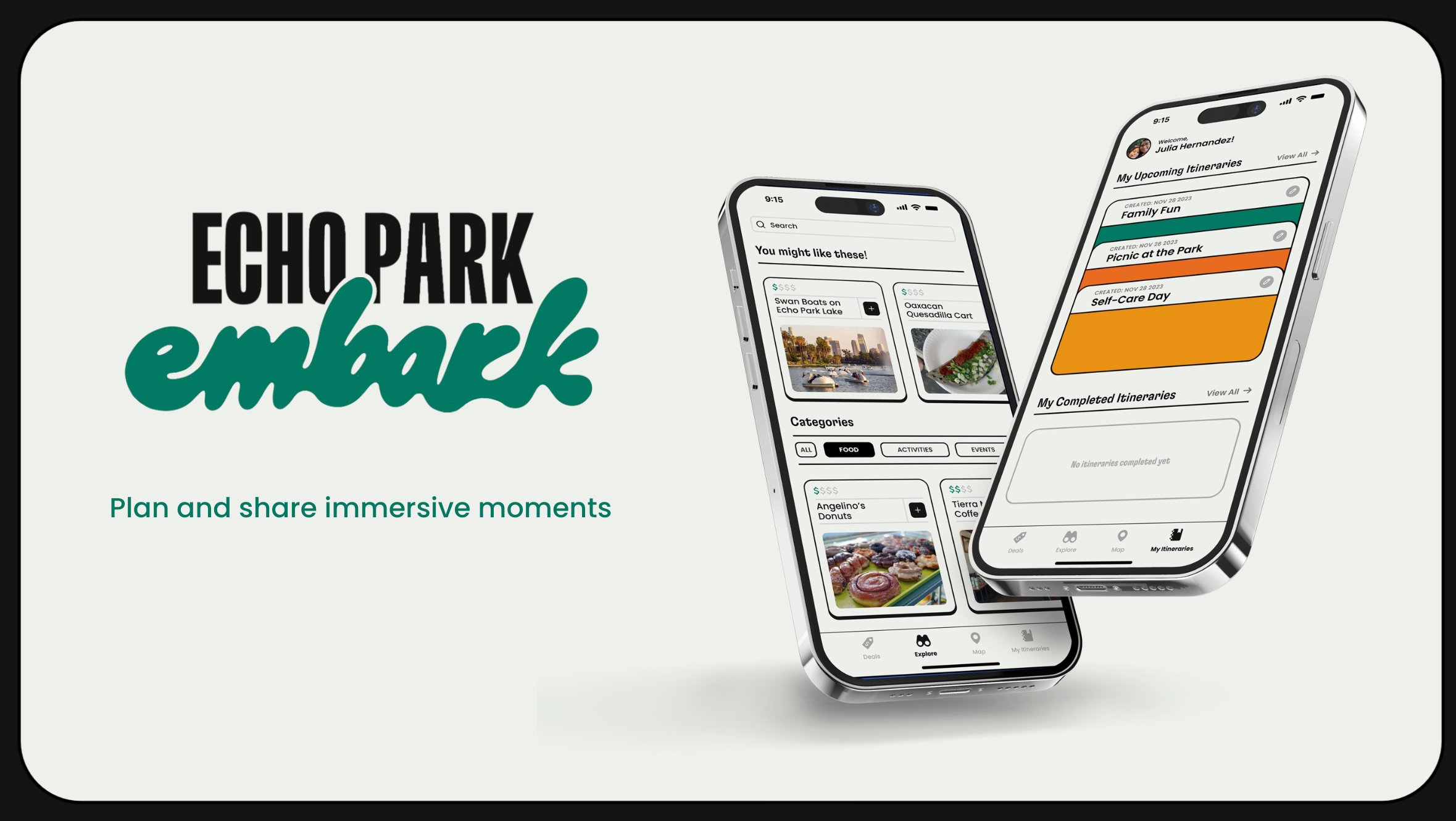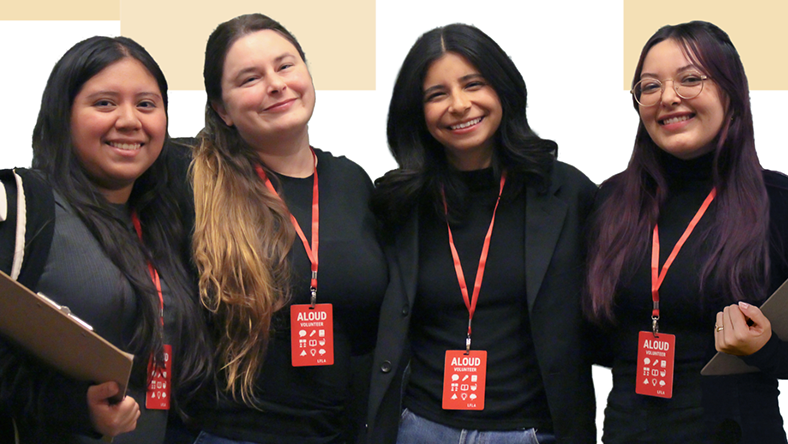Cultural Probes is a research method that encourages individuals to reflect and share their thoughts through open-ended, self-guided activities. Thus, a tool, The Reflection Box, was curated to understand the emotionally complex space of caregiving.
Project Timeline
Senior Studio II Spring 2023
My Role
Design Researcher | UX Designer

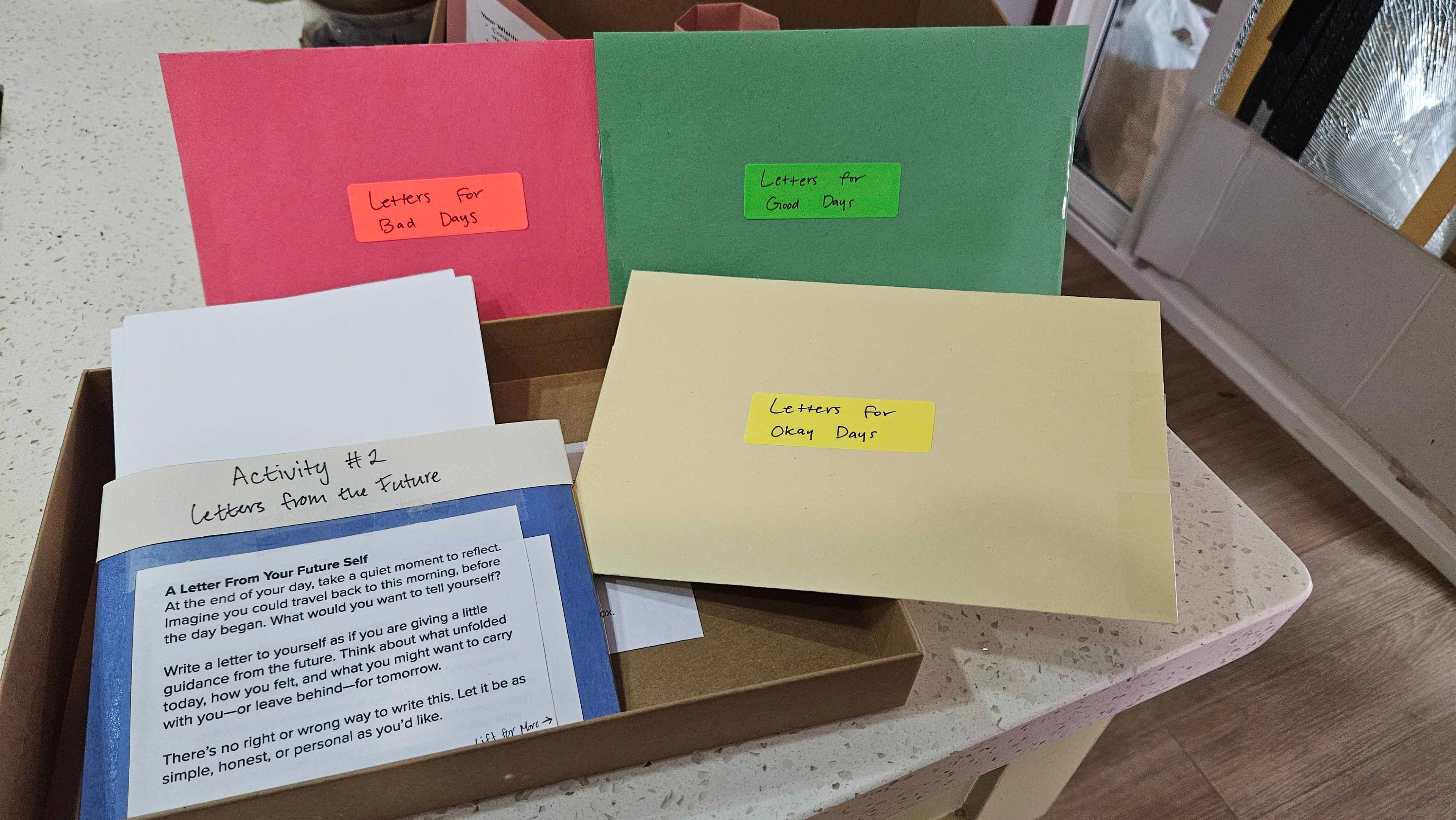

I curated and crafted these three activities for my Cultural Probe kits–The Reflection Box–to provide a flexible space for caregivers to engage with on their own terms.
Project Brief
This capstone began with an open-ended challenge:
“What is the problem you are trying to solve?”
Having spent much of my life as a caregiver, I decided to examine the gap between the support systems designed for caregivers and the emotional realities they face daily.
Problem
Although caregiving resources exist (apps, pamphlets, support groups), they are often underutilized. Caregivers—already emotionally and physically stretched—frequently don’t have the time, energy, or mental capacity to sift through solutions that feel generalized or irrelevant.
Insight
Caregiving is not a checklist. It’s a relationship filled with quiet grief, love, guilt, strength, and uncertainty. Traditional research methods like interviews or surveys often fail to reach the depth of this emotional reality or feel performative and exhausting to those already carrying so much.
Solution
Human-centered research must step in and focus on understanding the misalignment between caregivers and the supportive tools designed for them. Designing a research methodology tool—specifically through cultural probes—that meets caregivers where they are, offers emotional permission, and creates space for honest self-reflection. Using these tools to surface the invisible labor of care and examining how support systems might evolve to reflect lived experiences more closely.
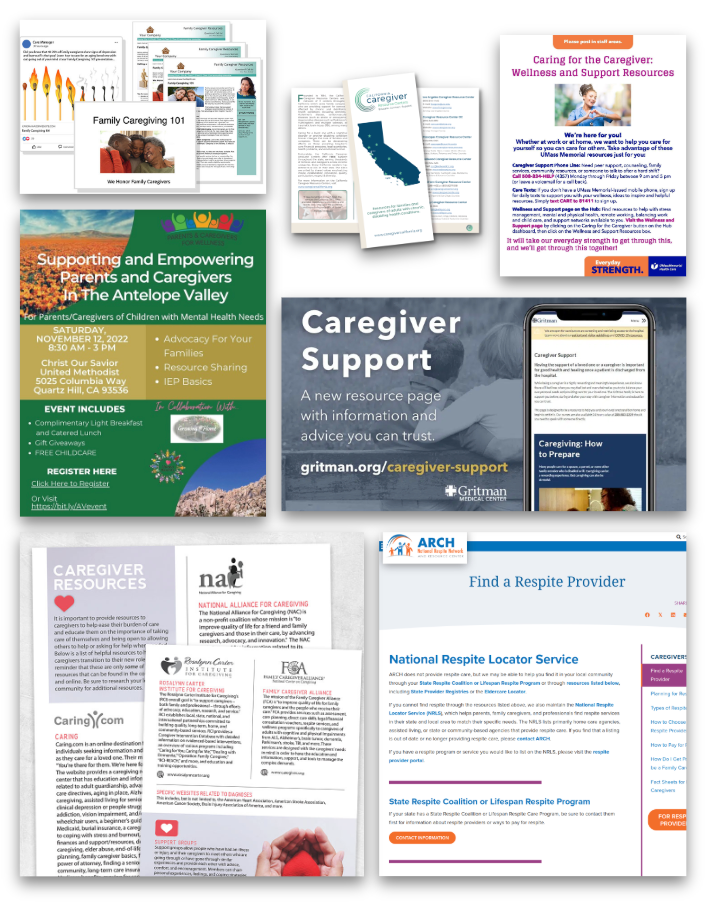
Countless resources caregivers have to sift through and still figure out if it relates to what they need.
I am only one of
37.1 million
unpaid caregivers in the U.S.
When you’re constantly prioritizing someone else’s well-being, even asking for help feels like just another task you don’t have the capacity for.
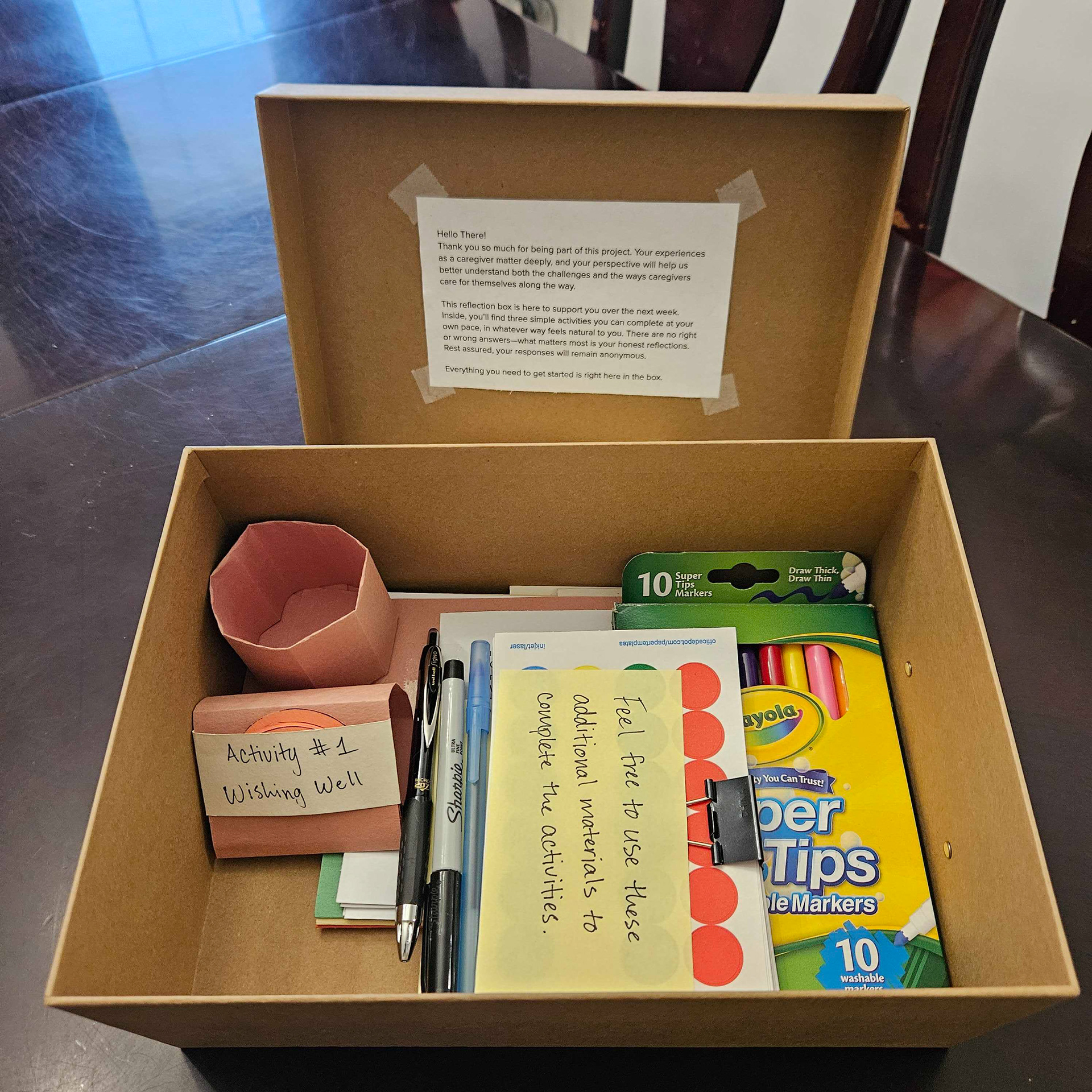
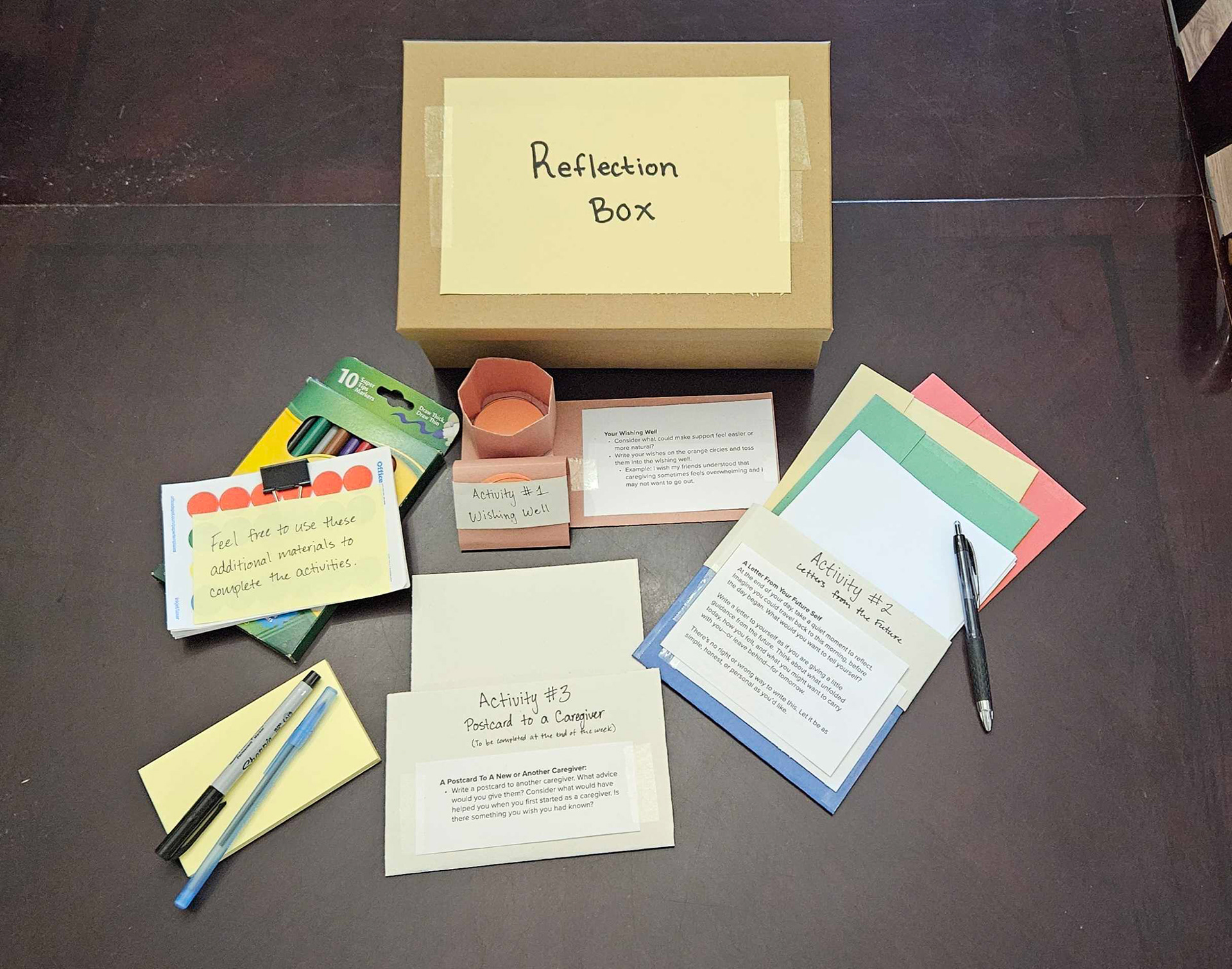
I assembled craft materials in our studio to create Reflection Box kits, which I distributed to caregivers for them to complete at their own pace.
Overview of the contents of each Reflection Box kit for caregivers, including instructions for completing the activities.
But, Isabel, how did YOU get here?
This project began with a personal question: Why do so many caregiving resources go unused, even when they’re available? As a lifelong caregiver and a designer, I understood this issue wasn’t just about access—it was about emotional overwhelm, timing, and trust. What started as a design investigation quickly became a deeper exploration of the unspoken realities caregivers carry with them every day.
Personal Foundation
Since the age of four, I’ve supported my father, and now my mother, through long-term health challenges. But it wasn’t until I faced my own mental health struggles during my final year of school that I saw how urgently caregiver well-being needs to be addressed. I initially considered designing practical tools—like a voice-activated assistant to ease household burdens—but I kept coming back to one question: Why don’t caregivers reach out for help, even when it’s available?
That question felt too big for a feature or app. It felt emotional. And I realized I needed to design from that emotional place, not around it.
Turning Point: A Method for Listening
A pivotal conversation with Miya Osaki, a human-centered healthcare designer, reframed my entire approach. She introduced me to cultural probes—a self-guided, open-ended research method that invites participants to reflect on their own terms. Miya reminded me that good research doesn’t extract—it holds space.
Speaking with a pediatric ER nurse added another layer. He described how caregivers in hospitals light up when someone offers them a blanket, a chair, or even a cup of water. These small gestures often carry the most weight. That insight stuck with me. It wasn’t about building another resource—it was about learning why emotional barriers keep people from using the ones that already exist.
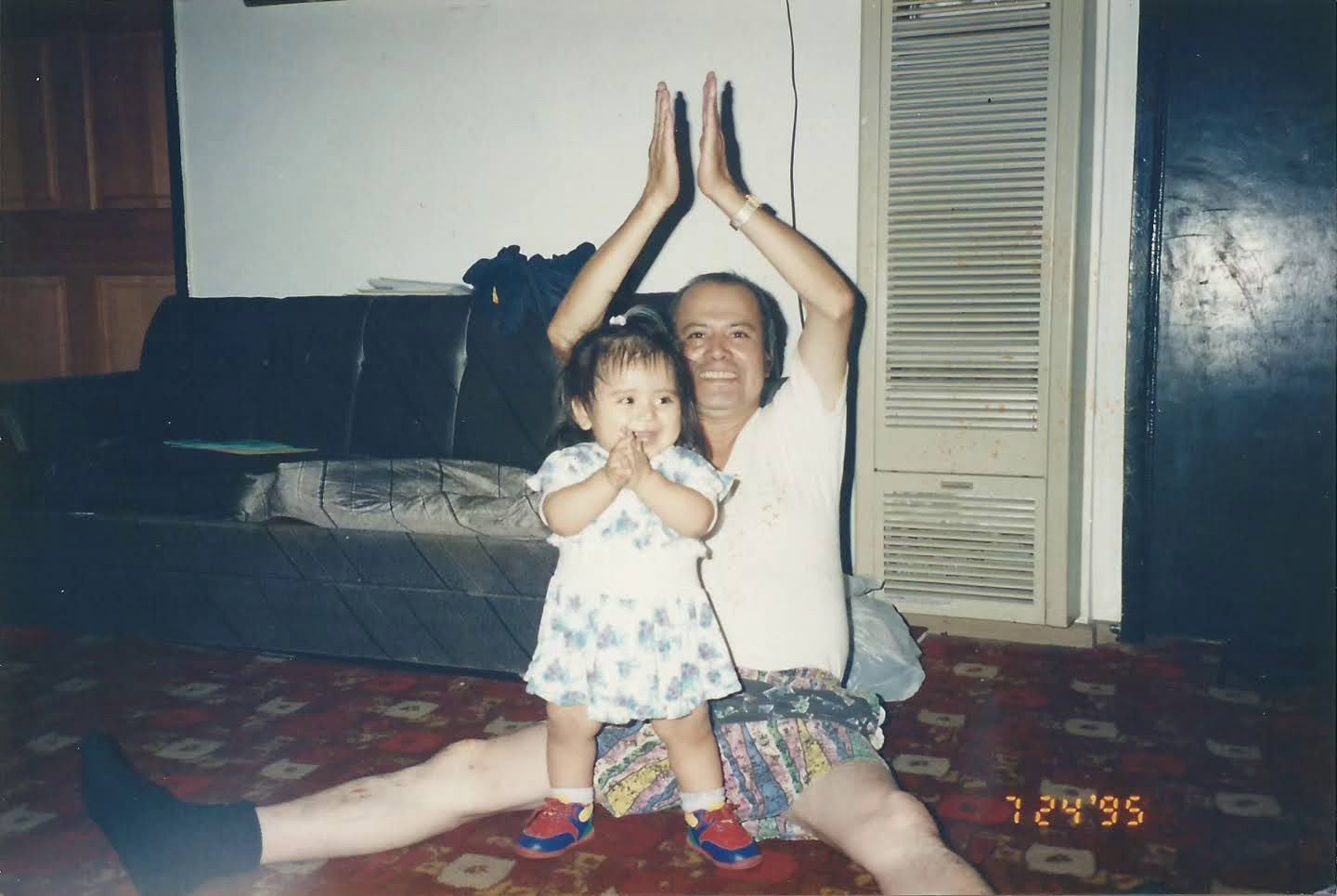
Circa 1997 - Me and my dad

Parent in and out of hospitals
How can we design support that aligns with the emotional, mental, and logistical realities caregivers live with every day?
Researching the Research Method: Cultural Probes
I began to reframe the project as a research study: not to create a caregiving product, but to examine how we ask questions, gather insights, and understand emotional realities within care.
This led to The Reflection Box—a physical kit containing three simple, self-guided activities designed to surface emotional insights. The goal was to create space for caregivers to share what they’re feeling, without judgment, pressure, or performance. I hand-delivered each kit, introduced the project in person, and returned later to collect their reflections.
From one designer to another, Miya Osaki emphasized:
“Cultural Probes aren’t solutions; they are methodologies for gathering insights in complex, emotional spaces like caregiving.”
Key Research Activities
•Secondary research into existing care tools and support platforms
•Informational interviews with ER nurses, designers, and caregiving professionals
•Conversations with caregivers and support group participants
•Development and facilitation of custom cultural probes
•Thematic analysis of handwritten reflections from four participating caregivers
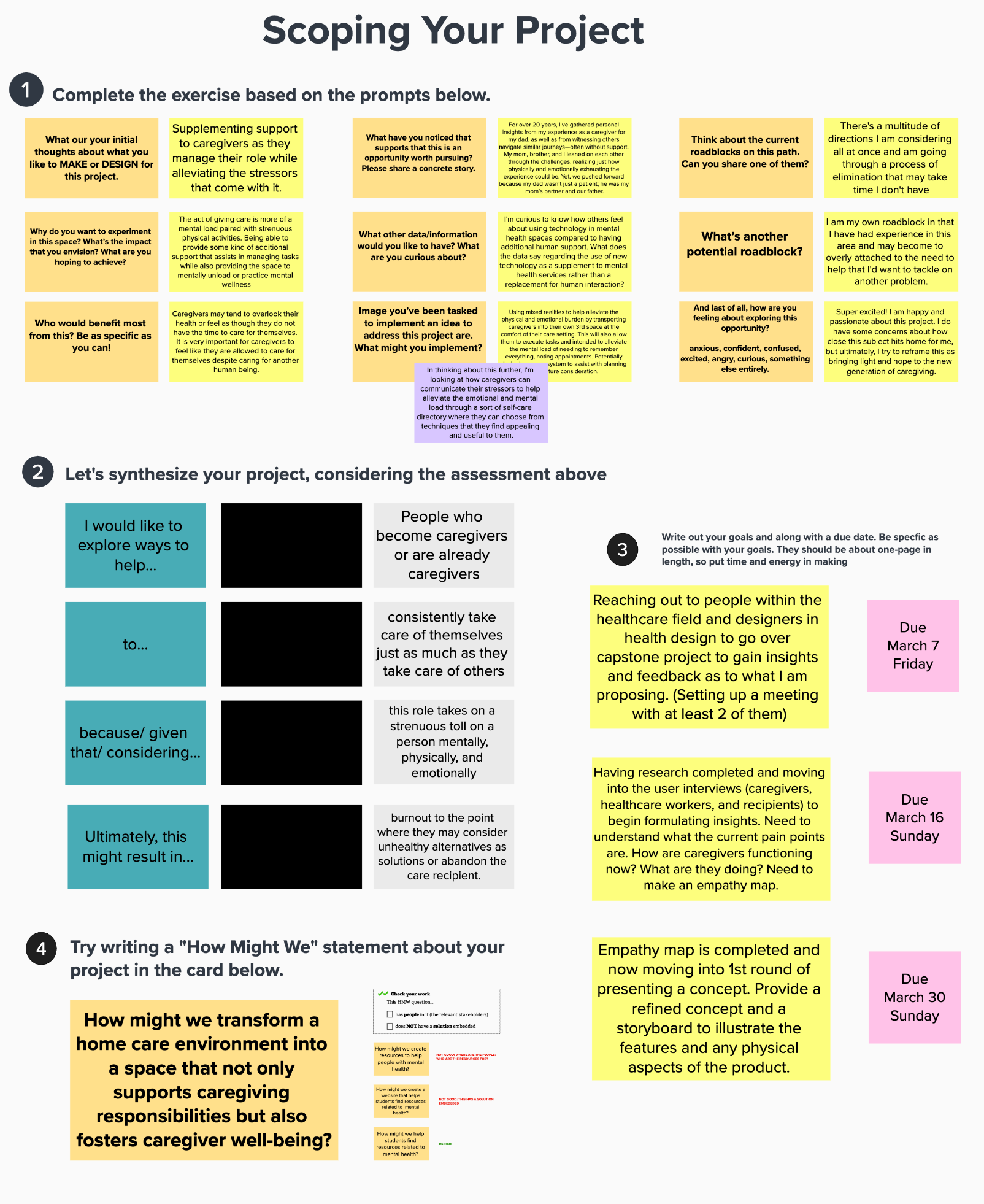
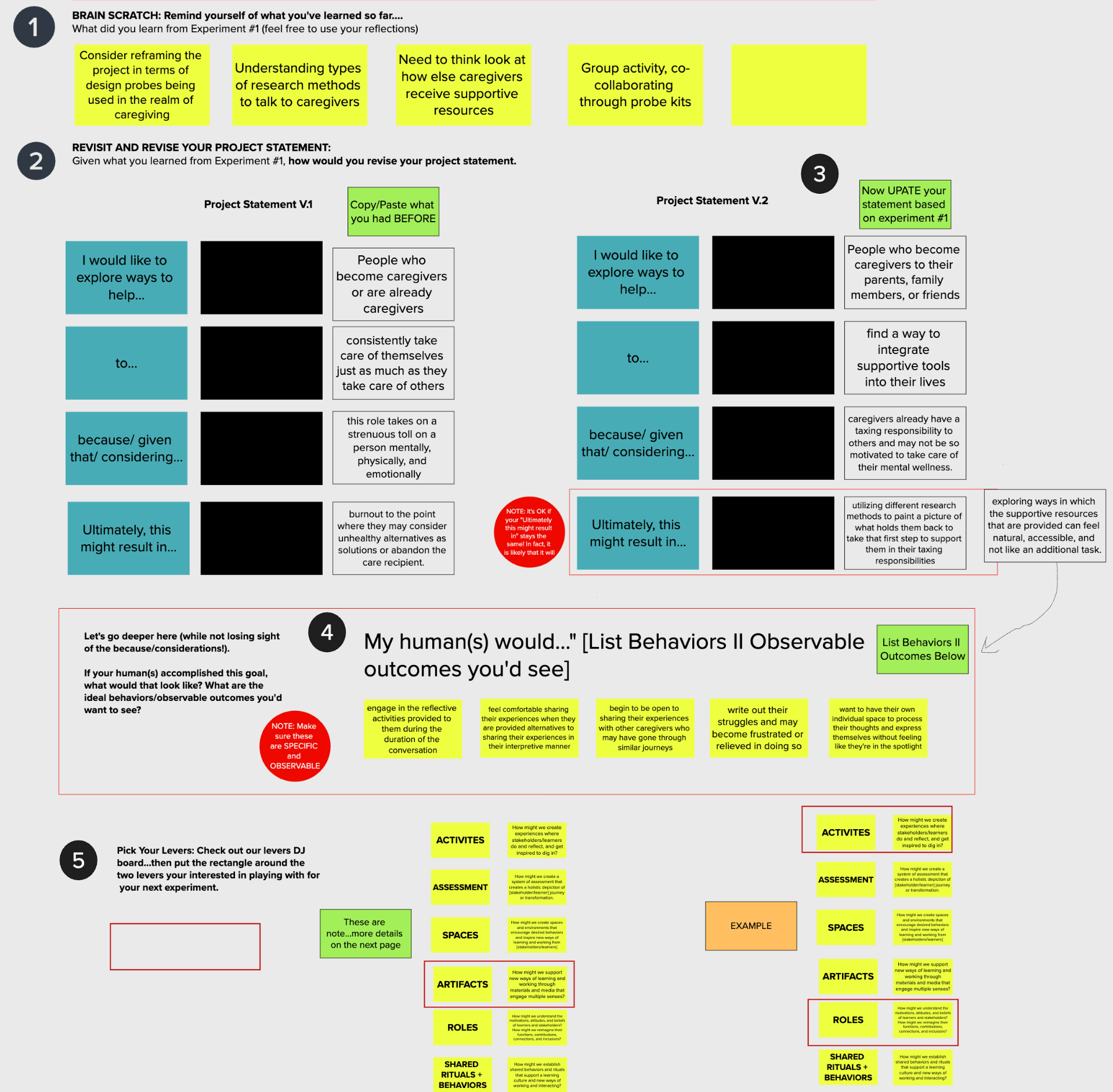
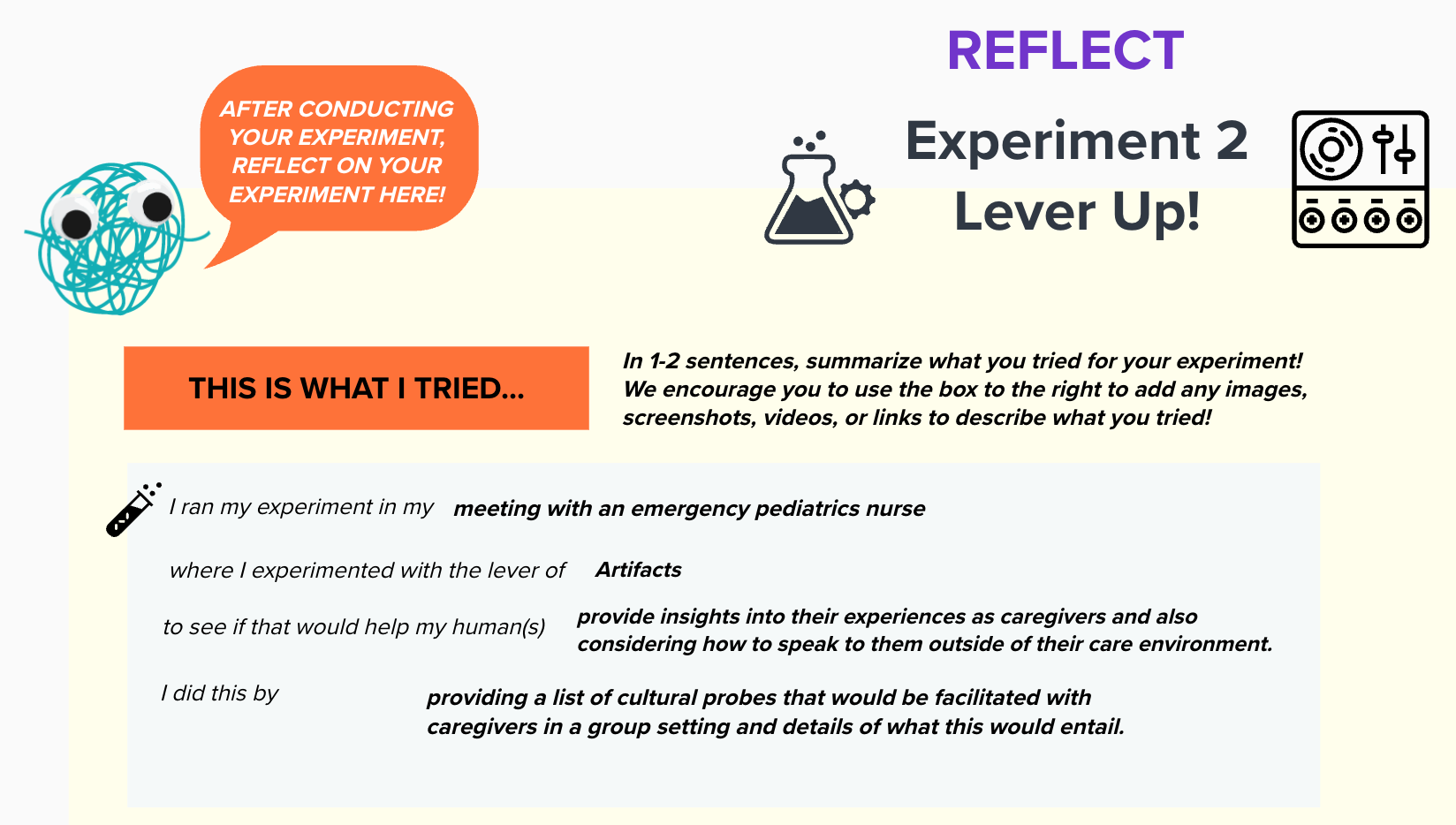
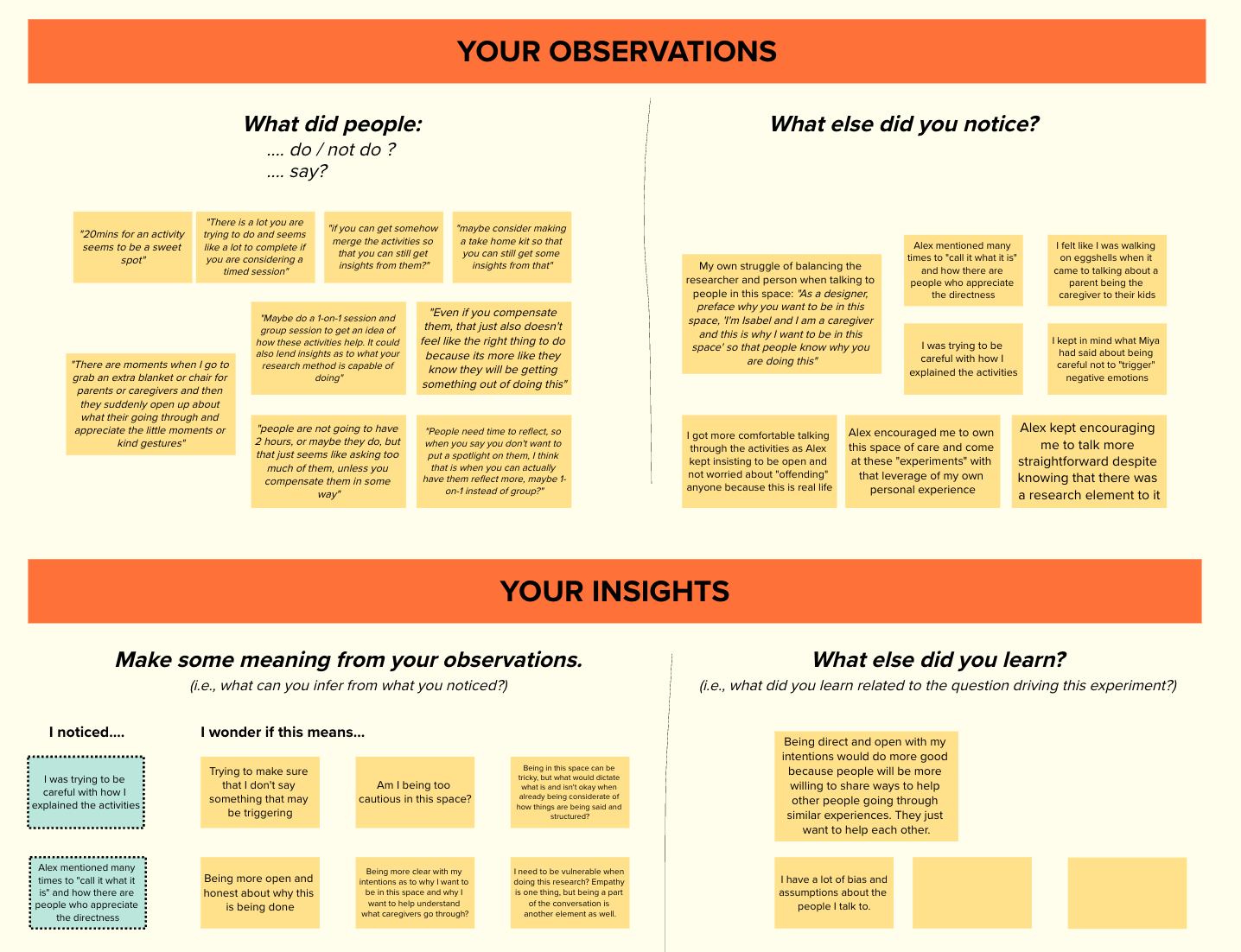
The Reflection Box | Listening to the Unspoken Labor of Care
The Reflection Box became more than a research tool—it became a moment of pause. Each caregiver responded to prompts like:
•What kind of support do you wish you had?
•How do you talk to yourself in the middle of it all?
•What would you tell another caregiver who’s feeling what you’re feeling?
The responses were powerful. Caregivers spoke of invisibility, emotional depletion, guilt, grief, and moments of reluctant strength. They didn’t ask for another brochure or checklist. They just wanted to be seen.
“I don’t want another app labeled ‘self-care.’ I want someone to notice that I’m quietly struggling.”
“I just want to feel like I matter too. Why is no one listening to me? I don’t need more paperwork—I just need someone to hear me.”
Even in their exhaustion, many wrote messages of encouragement to others—proof that caregivers extend care even when they’re at their limit. The box revealed not just what caregivers carry, but how little space we make for those feelings in research, healthcare, and design.
These words reveal a longing to be recognized not just as caregivers but as individuals who need care themselves. They illustrate what it means to carry the emotional weight of another person's life while silently setting aside your own needs.


How participants engage with the materials can vary. In some cases, caregivers revealed a very expressive form as they utilized all the materials in the box, communicating rich introspectiveness.
Why Cultural Probes Matter in Research
Caregiving isn’t a checklist—it’s a relationship shaped by love, responsibility, and sacrifice.
Traditional research often overlooks that emotional depth. Researchers frame their questions around more objective curiosity rather than a subjective approach. Building rapport and establishing trust with a participant is one aspect; however, the feeling of being acknowledged and understood on a deeper level is where the true essence of research must reside.
Probes slow things down and create space for the unsaid. They give caregivers agency to share on their own terms. And The Reflection Box is a reminder that how we listen matters.
Caregivers aren’t often given the time or permission to express what they carry, and support systems that don’t reflect that reality will always fall short. That’s the real problem this method revealed.
The Wishing Well activity enables participants to articulate their needs and wants as caregivers.
Every caregiving journey is different. Our research methods—and the systems we design—should reflect that.
Every caregiver, regardless of their unique circumstances or whom they care for, is connected by the same emotional thread.
Future of Care Design
Cultural Probes is an invaluable research method for redesigning the systems caregivers encounter daily. This approach is adaptable to various caregiving contexts, including caring for aging parents, managing chronic illnesses, and navigating grief. While Cultural Probes can't fix broken systems, they shed light on overlooked issues and encourage us to listen and redefine what care can be.
Empathy is essential, but we also need frameworks that honor emotional truths before designing solutions. I invite researchers, designers, and care-focused teams to rethink our approach: rather than expecting caregivers to adapt, let’s create systems that meet their needs.
Ultimately, there is no one-size-fits-all solution. As we move forward, I want to explore how Cultural Probes can be integrated into healthcare research, community programs, and workplace wellness initiatives. This project is not just about creating more compassionate research methods; it’s about advocating for care systems that adapt to people rather than the other way around.
Resources alone are not enough. We must design systems that reflect the emotional realities of the individuals they are meant to serve.
Reflection
This project reshaped how I understand design. It’s not always about solving a problem. Sometimes it’s about asking better questions. And sometimes, those questions don’t need to be answered—they just need to be heard.
In spaces like caregiving, emotional clarity must come before intervention. Cultural probes gave caregivers control over how they expressed themselves, and that emotional agency is often what’s missing in support systems designed for them, not with them.
The Physical Exhibition
The project culminated in a physical exhibition where visitors could read anonymous excerpts from the Reflection Boxes, respond to prompts themselves, and add their voices to a collective wall of care. The installation aimed to create the same emotional pause for visitors that the probe provided for caregivers—an opportunity to reflect, connect, and listen.

